Jiayuguan
Jiayuguan
Jiayuguan is a pass standing at the western end of the Ming Dynasty Great Wall. Different from the well-known sections built with stones or bricks, the Jiayuguan Great Wall was built with rammed earth, making yellow its dominant hue and helping the pass blend harmoniously with the surrounding desert. The city where the pass is located is named after the pass, also called Jiayuguan, sitting in China’s northwest Gansu Province. Built in 1540 during the Ming dynasty, the fortress had been built with a rectangular curtain of crenellated battlements. Inside were two keeps, each with three layers of green glazed tiled roofs. The fortress was restored in 1949 and looked as good as new.
A Japanese film company had been filming a military epic at the fort earlier in the morning. Workmen were in the process of clearing away piles of foam rubber used by stuntmen from under the battlements.
Vast deserts surrounded the fort, the remains of the last few miles of the Great Wall of China and, in the distance, the snow-capped peaks of the Tianshan. No wonder it was popular with filmmakers.
Lunch
Lunch was a picnic provided by the students. Sitting on the sand on the edge of the desert around a discarded three-legged stool, we ate in style: sweet bread rolls, tinned luncheon meat and a tin of stewed pork fat washed down with orange soda. Behind us, the fortress stood before a blue backdrop flecked with white. Beyond the fort lay the Middle Kingdom of ancient times and the true heart of China.
Jiuquan
Back in Jiuquan, there was little of the ancient town remaining. Instead, modern streets lined with avenues of poplars stood to remind me of the changes that were sweeping through China. As ever, there were reminders of an older way of life. In a shaded corner, a traditional medicine man sat on the pavement with his wares spread out beside him on a sheet of red plastic. Among the bones and horns in his collection, I recognised the skull of a bear; the dried head of a monkey with its mouth wide open; and a single horn from the rare Saiga antelope. There were many other bones and dried remains that I could not identify.
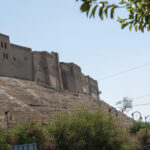
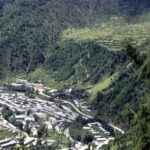
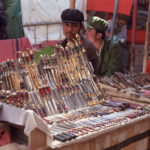
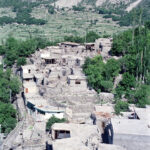

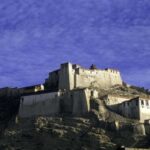
Leave a comment